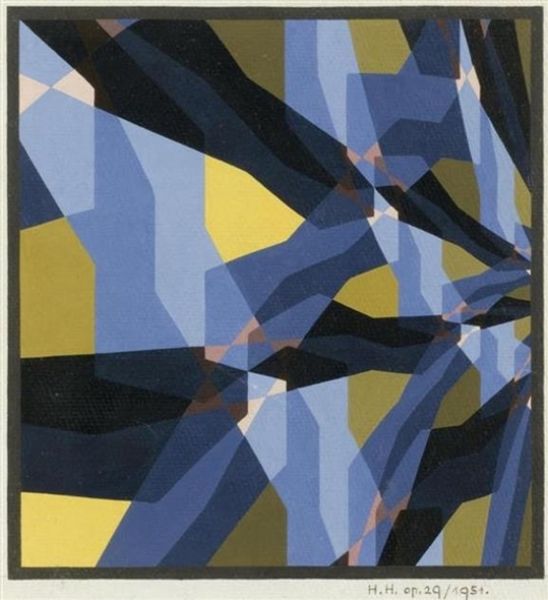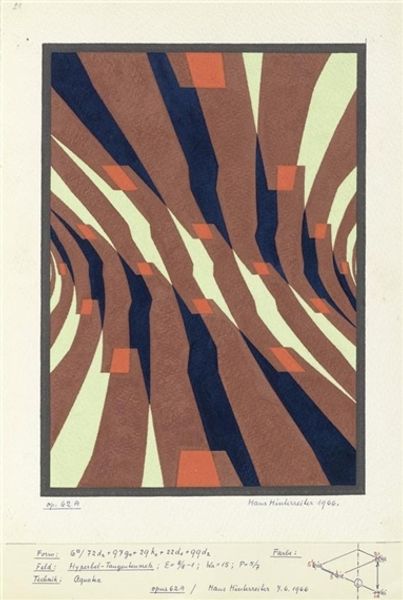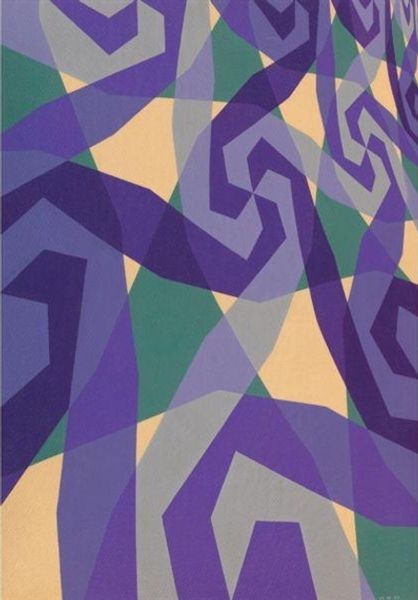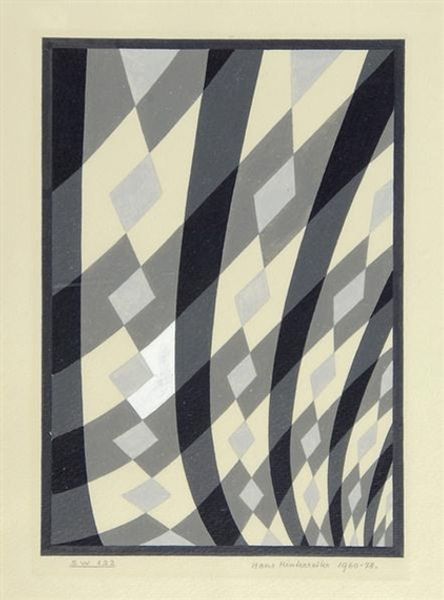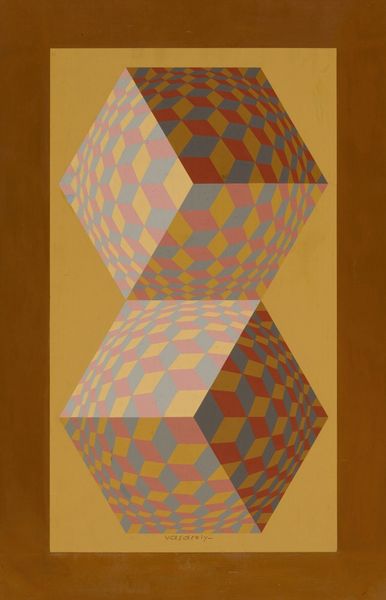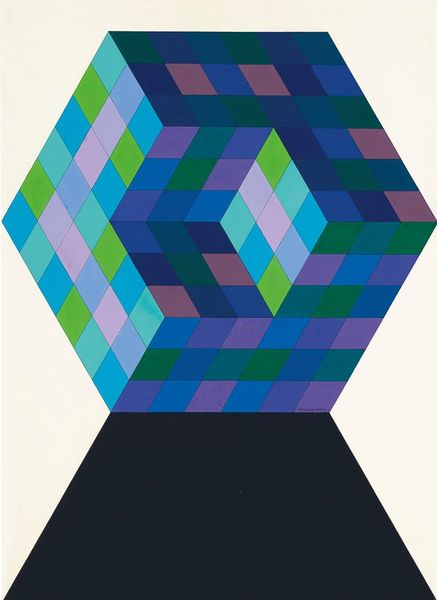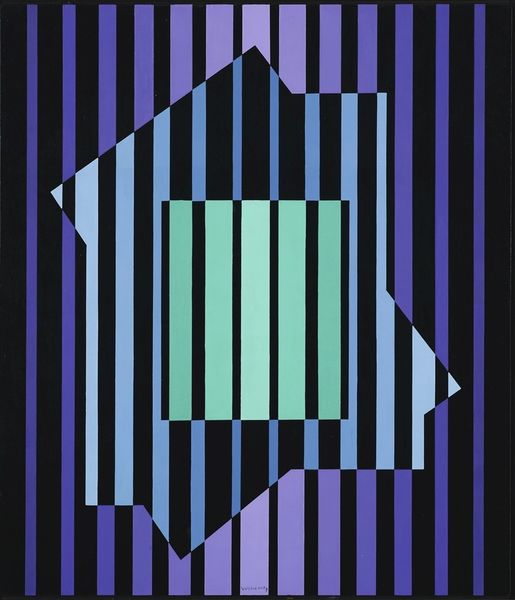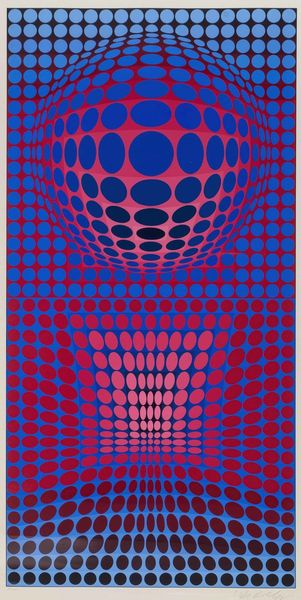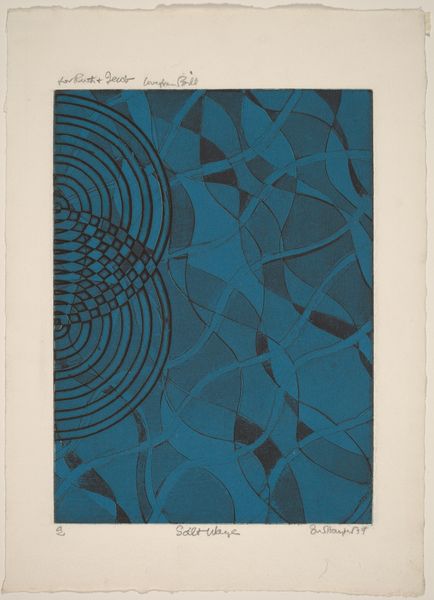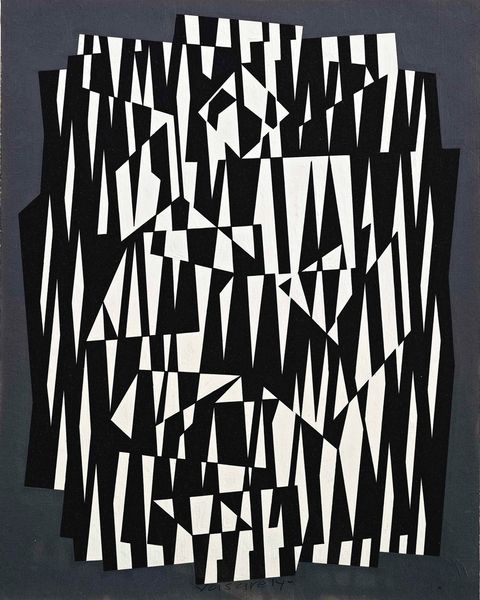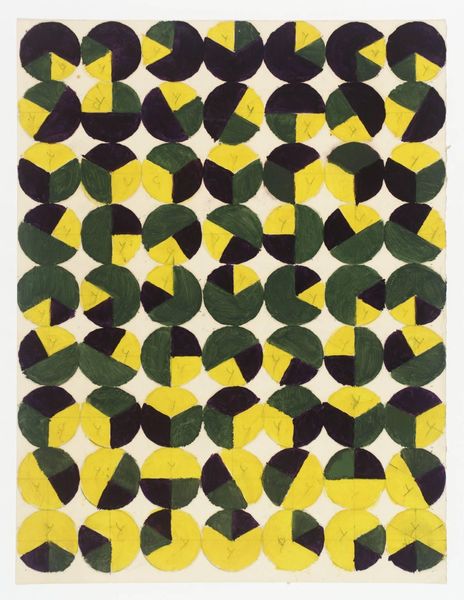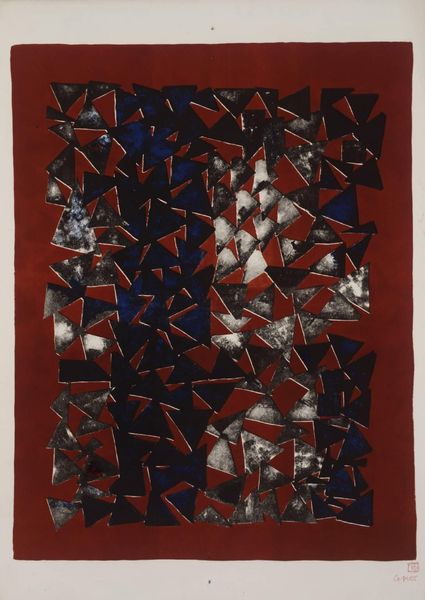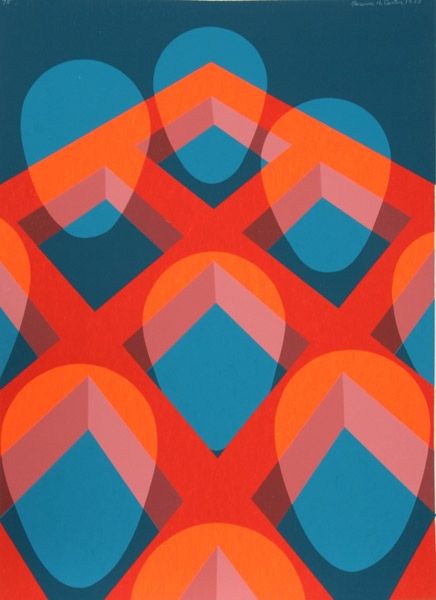
acrylic-paint
#
pattern heavy
#
loose pattern
#
pattern
#
acrylic-paint
#
geometric pattern
#
abstract pattern
#
geometric
#
geometric-abstraction
#
repetition of pattern
#
vertical pattern
#
abstraction
#
pattern repetition
#
layered pattern
#
funky pattern
#
combined pattern
#
hard-edge-painting
Copyright: Hans Hinterreiter,Fair Use
Curator: Hans Hinterreiter's "Opus 131 C," created in 1977, immediately strikes the eye. Constructed with acrylic paint, this geometric abstraction displays a compelling visual interplay. Editor: My first impression is that it's strangely calming. The repeating shapes create a rhythm, like gazing into a kaleidoscope, even if that kaleidoscope has a slightly melancholic color palette. Curator: The painting engages several key concepts within Formalism. Notice how the artist orchestrates a balanced tension between the flat picture plane and the illusion of three-dimensionality. The chromatic organization of blues with contrasting triangles accentuates this dynamic, prompting viewers to deconstruct their visual assumptions. Editor: I see that. But what if it's also about Hinterreiter just messing around with shapes? Sometimes artists are just vibing, you know? I picture him in his studio, thinking, "What if I jam these triangles into a blue grid?" I like to think art should tickle the mind, not always decode it. Curator: I appreciate that approach. Still, let's consider how Hinterreiter utilizes color theory. The interaction of blues and greens establishes depth and dimension through the relationship between shades. Semiotics may give us clues on interpreting it more structurally and not arbitrarily. Editor: Structure! Sometimes I just want art to set my brain on fire and dance with the flames! I look at this, and I see a skewed portal, maybe leading to a parallel world full of odd angles and calming energy. You’d step into it, wouldn’t you? You’d have a philosophical approach. I’d be happy tripping inside a nice composition like this one. Curator: Well, perhaps that emotional and experiential aspect contributes to its aesthetic success, especially through an analysis rooted in philosophy. You see the canvas more holistically through its visual structure. Editor: Right! "Opus 131 C" has its mathematical rules; it also dances inside my imagination like a funny dream that I can see with my own eyes wide open. Curator: Your interpretations shed light to other considerations—perhaps beyond formalism—suggesting its complexities and the artist's clever use of hard-edge painting techniques. Editor: Yeah, there's plenty to look into on that portal of his!
Comments
No comments
Be the first to comment and join the conversation on the ultimate creative platform.
